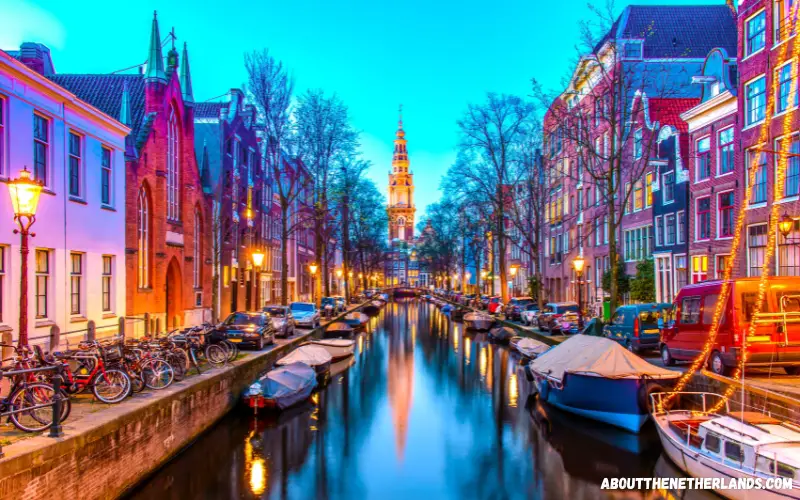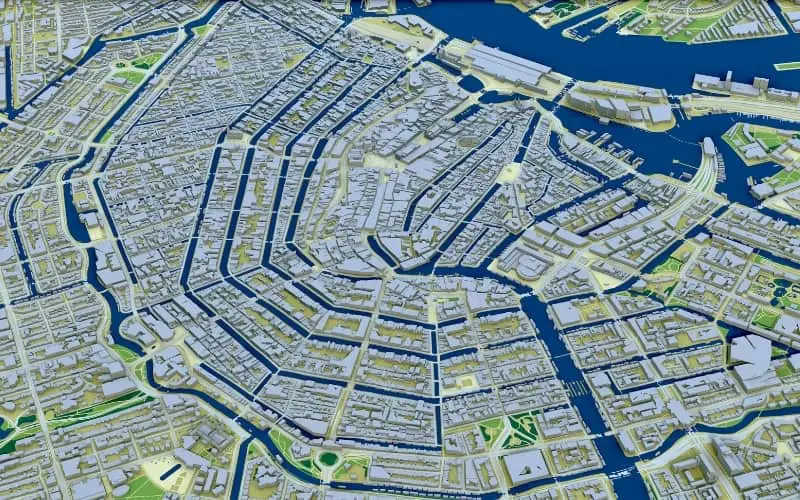

Amsterdam, the capital city of the Netherlands, is known for its beautiful canals. These canals are not just for aesthetic purposes but have a rich history behind them. The canals of Amsterdam were built in the 17th century, during the Dutch Golden Age.
The primary reason for the construction of these canals was for transportation and trade purposes. During the Dutch Golden Age, Amsterdam was a major trading center, and the canals provided a way to transport goods from the city center to other parts of the country and beyond. The canals were also used for defense purposes, as they provided a barrier against potential attacks from the sea.
Overall, the construction of the canals played a significant role in the development of Amsterdam into the thriving city it is today. The canals not only served practical purposes but also added to the city's charm and beauty, making it one of the most popular tourist destinations in Europe.

With its location below sea level, Amsterdam has always been prone to flooding. In the 17th century, the city experienced rapid population growth, which put more pressure on its water management system. The city's canals, which were initially built for transportation and defense purposes, were also used to manage water levels.
The city's water management system was facing several challenges, including:
To address these challenges, the city embarked on a massive water management project, which involved the construction of new canals, locks, and dams. The project was led by Jan Adriaanszoon Leeghwater, a Dutch engineer, and was completed in the 19th century.
Today, the canals of Amsterdam are not only a popular tourist attraction but also serve as an important part of the city's water management system. The canals help regulate water levels, prevent flooding, and provide a water source for the city's residents.

The Canal Belt, also known as the Grachtengordel, is a UNESCO World Heritage site and one of Amsterdam's most popular tourist attractions.
But why were these canals built in the first place?
The answer lies in the city's rapid growth during the 17th century. Amsterdam was becoming a major trading center, and its population was expanding quickly. The city's medieval walls were no longer sufficient to contain the growing population, and there was a need for new housing and infrastructure.
In 1613, the Amsterdam city council approved a plan to create a new canal belt. The plan called for the construction of three main canals, which would form concentric rings around the old city center. These canals were the Herengracht, Keizersgracht, and Prinsengracht.
The construction of the canal belt was a massive undertaking. Workers had to dig out the canals by hand, using shovels and wheelbarrows. The soil they excavated was used to create new land, which was then sold to developers to build new houses and warehouses.
Despite the challenges, the construction of the canal belt was a success. The new canals provided a way to transport goods and people throughout the city, and they also helped to drain the swampy land that surrounded Amsterdam. The canal belt became a symbol of Amsterdam's prosperity and power, and it remains one of the city's most iconic features to this day.
The canals of Amsterdam were built for several purposes, including:
Overall, the canals of Amsterdam played a crucial role in the development and growth of the city. They helped to facilitate trade and commerce, protect the city from invaders, regulate the water level, and create a unique and beautiful urban environment. Today, the canals continue to be an important part of Amsterdam's cultural heritage and a major tourist attraction.

The famous canals of Amsterdam are not just a functional infrastructure but also a symbol of the city's prosperity. The construction of the canals was a major engineering feat that required significant financial and human resources. The canals were built during the Dutch Golden Age, a period of great economic growth and cultural flourishing in the Netherlands.
The canals were not only used for transportation and trade but also for drainage and defense. They helped to regulate the city's water levels and protect it from flooding. The canals also served as a defensive barrier, making it difficult for enemies to invade the city from the water.
The construction of the canals was a reflection of Amsterdam's wealth and power. The city was one of Europe's most important trading centers, with a thriving economy based on trade and commerce. The canals facilitated this trade, making it easier to transport goods and connect with other parts of the world.
Over time, the canals became an integral part of Amsterdam's identity and culture. They are now a major tourist attraction, drawing visitors from all over the world. The canals also symbolize Amsterdam's commitment to sustainability and environmentalism. The city has implemented various measures to preserve and maintain the canals, including regular cleaning and dredging.
Overall, the canals of Amsterdam are a testament to the city's ingenuity, prosperity, and resilience. They have played a crucial role in the city's development and continue to be an important part of its heritage and identity.

The canals of Amsterdam have left a lasting impact on the city and its people. They have contributed to the city's unique character and have become an iconic symbol of Amsterdam.
Here are some of the legacies of the canals:
Overall, the canals of Amsterdam have become an integral part of the city's identity. They have shaped the city's history, culture, and economy and continue to be a source of pride for its residents.
As you have read, Amsterdam and its canals are intertwined. Anyone who thinks of Amsterdam automatically thinks of its beautiful canals.
The construction of the canals brought great wealth and prestige to Amsterdam and the Netherlands. Despite the fact that today the canals are mostly visited for their beauty, even to this day, they serve what they were once intended for.
I absolutely recommend visiting some of the canals during your visit to Amsterdam and immersing yourself in their history!
My article with facts about the Amsterdam canals will help you increase your knowledge about them!